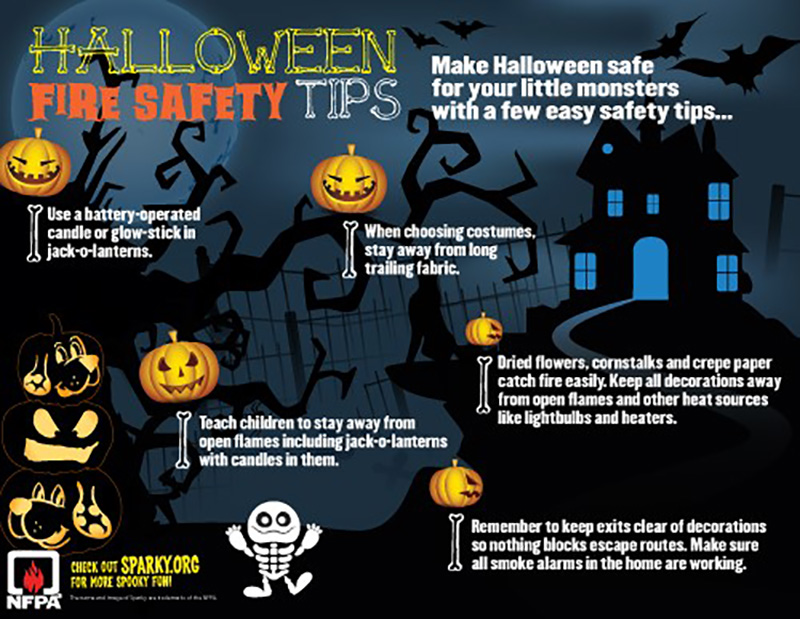Halloween fire safety: What to know to avoid the truly frightening
Trick, treat, or trouble?
- Halloween celebration-related fires cause millions of dollars’ worth of property damage each year.
- Fire-related deaths aren’t unheard-of.
- Adults and children alike ought to learn how to protect themselves from fires associated with Halloween paraphernalia.
The candy-coated costume carousal we know as Halloween has its roots in the Celtic harvest festival Samhain, which was a rather fire-heavy event: Following a day of general revelry a Druid priest would build a large bonfire on holy ground using dried wood, withered corn husks, and a wheel that would throw off sparks magnificently. And, obviously, dangerously.
Today’s Halloween festivities look somewhat different. Yet we continue to remember the dead, celebrate the end of the harvest season, and amass footlockers worth of candy amid largely preventable fire hazards.
What can you do to protect your home during this most incandescent of holidays? We’ll go over that in detail below.
Why focus on Halloween fire safety in particular?
Is Halloween really more dangerous than other holidays in terms of fire safety? Officials at New York State’s Division of Homeland Security and Emergency Services seem to think so. And according to data gathered by the United States Fire Administration (USFA) for the years 2017 to 2019, 9,200 fires occurred between October 30th (known as Devil’s Night by certain degenerate Northeasterners) and November 1st (All Souls’ Day, during which some formally pray for their dearly departed). These weren’t just minor blazes, either. Halloween fires caused:
- 25 deaths
- 100 injuries
- $117 million in property loss
The spirits of the dead weren’t responsible for these fires, or not as far as anyone knows, anyway: Just over half were caused by cooking accidents, most between 6:00 p.m. and 7:00 p.m. (Cooking, as a matter of fact, is the number one cause of home fires in general.)
But ordering takeout won’t put you entirely out of harm’s way. The National Fire Protection Association (NFPA) notes that between 2015 and 2019 an average of 760 home-damaging fires were caused by seasonal decorations—35% of these initiated by candles.
What’s to be done?
Putting a stake through the heart of ancient Druidry, the Minnesota Department of Public Safety recommends outright refraining from building any sort of outdoor fire, as windborne embers may alight on flammable children.
That’s a rather extreme suggestion, however. After all, what is Halloween without fire—jack-o’-lanterns, tall black candles, bonfires and so on?
So fire there shall be. That being the case, you can reduce your risk of injury or property damage by following a few basic Halloween fire safety tips:
- Replace open flames with LED glowsticks where possible—in jack-o’-lanterns, for instance.
- Be careful around open flames if you’re wearing a costume that could be described as diaphanous—that is, made up of flowing, floating, billowing cloth that seems to have a way of catching fire at the worst time. In fact, purchase a costume made of flame-resistant material if possible.
- Never leave an open flame unattended.
- Keep children—and curtains—well away from matches, lighters and all manner of open flames.

Image provided by NFPA. View original here.
Related: Home emergency preparedness plans for children
Have fun, but be prepared
There’s a difference between fun-scary and scary-scary. Make sure your Halloween is the former rather than the latter by observing the basic Halloween fire safety tips above.

![You are currently viewing Halloween fire safety: Avoid the frightening [infographic]](https://www.arrowheadgrp.com/wp-content/uploads/2023/10/Halloween-Safety-Blog.png)